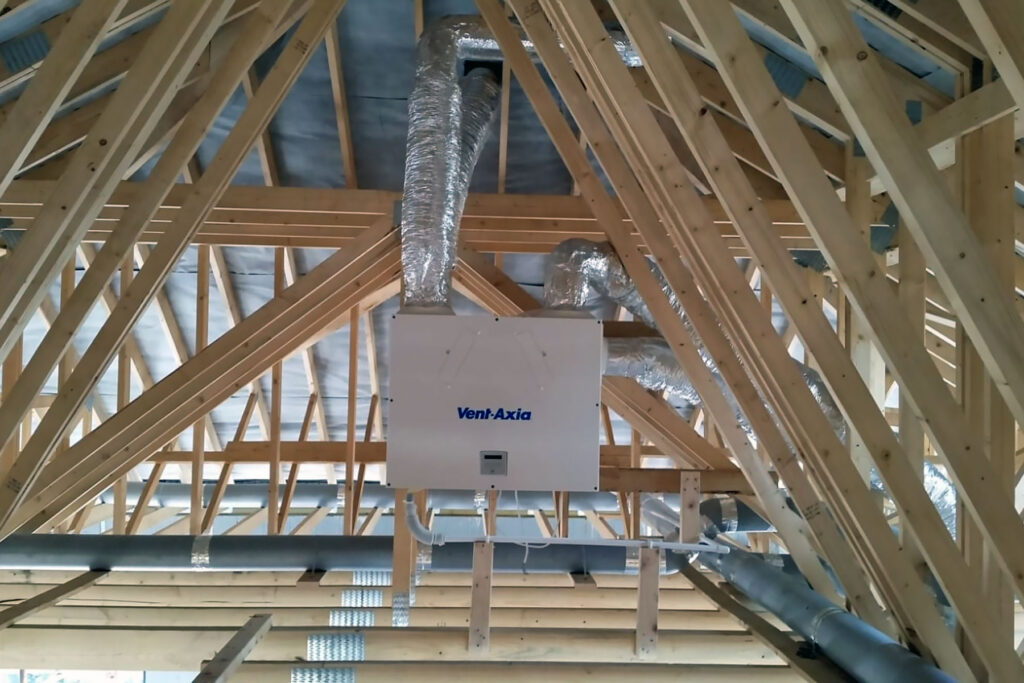What is a Passive House?
A Passive House is a rigorous, voluntary standard for energy efficiency in a building, reducing its ecological footprint. It results in ultra-low energy buildings that require little energy for space heating or cooling. Achieving this standard involves meticulous design and attention to detail, particularly in insulation, airtightness, and of course, ventilation.
The Importance of Ventilation
Ventilation is crucial in Passive Houses for several reasons:
1. Air Quality:
- Fresh Air Supply: Ventilation systems in Passive Houses ensure a continuous supply of fresh air, which is essential for maintaining good indoor air quality.
- Pollutant Removal: Effective ventilation helps remove indoor pollutants, moisture, and Odors, contributing to a healthier living environment.
2. Temperature Control:
- Heat Recovery: Most Passive Houses use Mechanical Ventilation with Heat Recovery (MVHR) systems. These systems transfer heat from outgoing stale air to incoming fresh air, maintaining a comfortable indoor temperature without the need for excessive heating or cooling.
- Consistent Climate: Proper ventilation ensures a stable and consistent indoor climate, which is one of the key benefits of Passive House living.
3. Energy Efficiency:
- Minimised Energy Loss: MVHR systems are designed to minimise energy loss, making Passive Houses incredibly energy-efficient. The heat recovery process means that the energy required to heat or cool the incoming air is significantly reduced.
- Reduced Energy Bills: With less energy needed for heating and cooling, occupants of Passive Houses can enjoy lower energy bills, making these homes not only environmentally friendly but also cost-effective in the long run.
- How Ventilation Systems Work in Passive Houses
- Mechanical Ventilation with Heat Recovery (MVHR):
- Heat Exchanger: At the heart of an MVHR system is a heat exchanger that transfers heat from the outgoing stale air to the incoming fresh air. This process retains up to 90% of the heat, ensuring minimal energy loss.
- · Ductwork: A network of ducts distributes fresh air to living spaces (bedrooms, living rooms) and extracts stale air from wet rooms (bathrooms, kitchens).
- Filters: Filters in the MVHR system remove dust, pollen, and other pollutants from the incoming air, ensuring high indoor air quality.
Benefits of Ventilation in Passive Houses
1. Health and Comfort:
- Consistent fresh air supply enhances the health and comfort of occupants.
- Stable indoor temperatures reduce the risk of health issues related to cold or overheating.
2. Sustainability:
- Efficient ventilation systems contribute to the overall sustainability of Passive Houses.
- Reduced energy consumption lowers the environmental impact of the home.
3. Economic Advantages:
- Lower energy bills result from reduced heating and cooling demands.
- Potential increase in property value due to high energy performance standards.
Conclusion
Ventilation plays a pivotal role in the success of Passive Houses, ensuring that these homes are not only energy-efficient but also comfortable and healthy to live in. By maintaining excellent air quality, stable temperatures, and minimizing energy loss, effective ventilation systems help Passive Houses achieve their remarkable performance standards.


